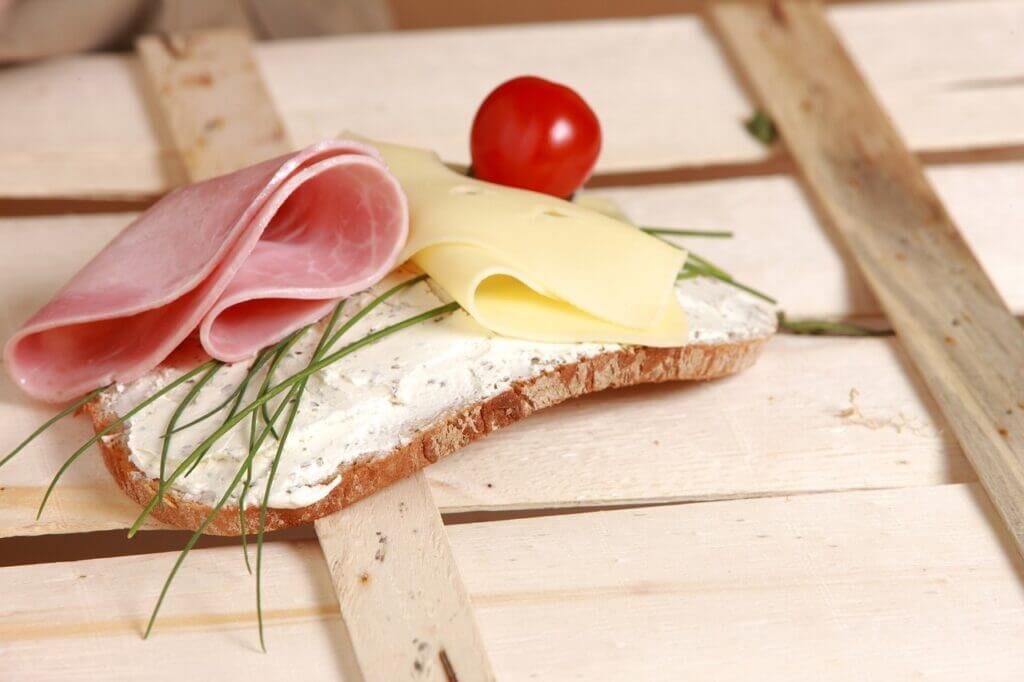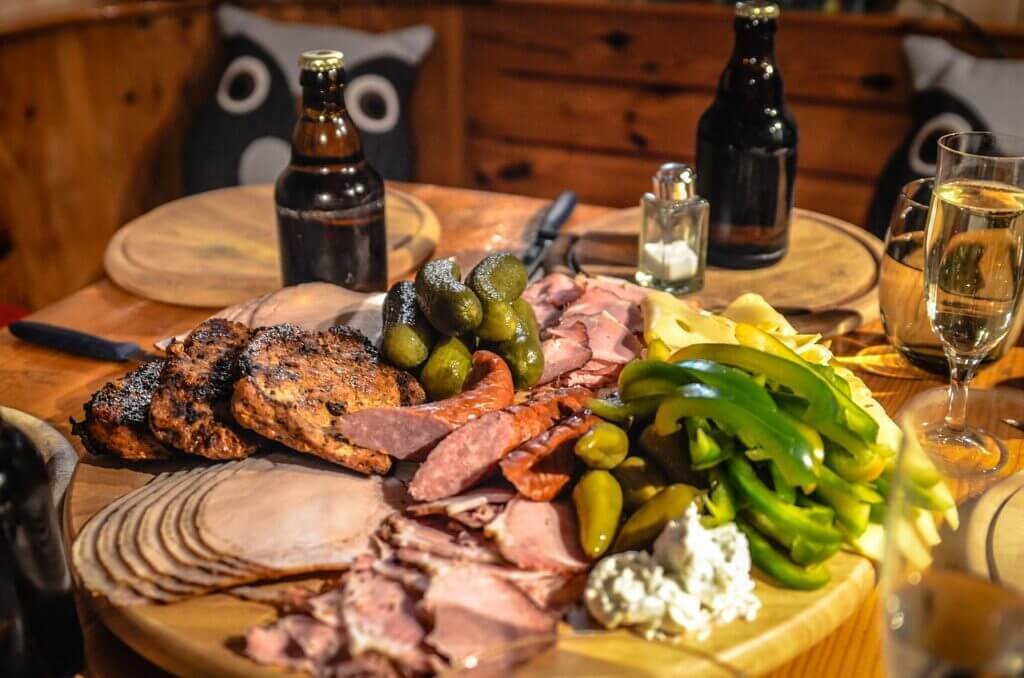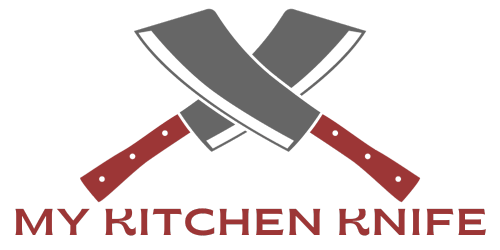Are you tired of unevenly cut cheese slices ruining the presentation of your dishes? Look no further! This article is here to help you achieve the perfect cheese slices with precision. Whether you’re a cheese connoisseur or simply want to elevate your next cheese platter, we’ve got you covered with tips and techniques to ensure professional-looking results. Get ready to become the master of cheese slicing in no time!

Choosing the Right Cheese
When it comes to slicing cheese with precision, one of the first steps is to choose the right type of cheese. Understanding the different types of cheese is essential in order to select the ideal cheese for slicing and preparation.
Understanding Different Types of Cheese
There is a wide range of cheese available, each with its own unique characteristics. Some common types of cheese include cheddar, mozzarella, Swiss, Brie, and feta. Hard cheeses are dense and firm, while soft cheeses have a creamy texture. Semi-soft cheeses fall somewhere in between, offering a bit of both. It’s important to consider these differences when selecting a cheese for slicing, as the texture and firmness will affect the slicing technique and results.
Selecting the Ideal Cheese for Slicing and Preparation
When choosing a cheese for slicing, it’s important to consider the purpose of the slices. If you’re planning to use the cheese in a sandwich or for melting purposes, a softer cheese like mozzarella or Brie may be a good choice. On the other hand, if you’re looking for cheese slices to serve on a charcuterie board or cheese platter, a firmer cheese like cheddar or Swiss can hold its shape better.
Consider the flavor profile as well. Some cheeses have strong flavors that may overpower other ingredients, while others have milder tastes that complement various dishes. Take into account your personal preferences and the dishes you plan to prepare when selecting the ideal cheese for slicing and preparation.
Considering the Texture and Firmness of Cheese
The texture and firmness of cheese play a crucial role in how it can be sliced. Hard cheeses, such as Parmesan or aged cheddar, require a different approach compared to soft cheeses like camembert or goat cheese. Hard cheeses are often easier to slice into thin, even pieces, while soft cheeses may crumble or stick to the knife if not handled with care.
When considering the texture and firmness of the cheese, it’s important to think about the final presentation as well. If you’re aiming for uniform slices, a firmer cheese will allow for cleaner cuts. On the other hand, if you prefer a more rustic or crumbly presentation, a softer cheese can add a lovely texture to your dish.
Tools and Equipment
To achieve precision when slicing and preparing cheese, it’s crucial to have the right tools and equipment on hand. Here are the essential items you’ll need:
Essential Tools for Slicing Cheese
Cutting board: Choose a sturdy and non-slip cutting board that provides a stable surface for slicing cheese. Wood or marble cutting boards are excellent options.
Cheese knife: Invest in a good quality cheese knife with a sharp blade. Cheese knives are specifically designed to cut through the different textures and firmness of cheese.
Cheese wire or slicer: For certain types of cheese, such as aged gouda or blue cheese, a cheese wire or slicer can be a handy tool to achieve thin, even slices.
Choosing the Right Knife
When it comes to selecting a cheese knife, there are various types to choose from. The type of cheese knife you use will depend on the texture and firmness of the cheese you’re slicing. Some common types of cheese knives include:
Cheese plane: Ideal for slicing thin, even slices of softer cheeses.
Cheese cleaver: Designed for cutting through hard and aged cheeses, with a thick and sturdy blade.
Cheese spreader: Perfect for soft and spreadable cheeses, allowing for easy spreading onto crackers or bread.
Cheese wire cutter: A thin wire stretched between two handles, used for slicing delicate and crumbly cheeses.
It’s important to choose a knife that suits your specific cheese slicing needs and feels comfortable in your hand. A sharp blade is essential for precise slicing, so be sure to regularly sharpen and maintain your knife.
Using a Cheese Wire or Slicer
For certain types of cheese, such as those with a crumbly or creamy texture, using a cheese wire or slicer can be advantageous. A cheese wire or slicer allows you to achieve thin, uniform slices without the risk of crumbling or sticking to the knife. Simply position the wire or slicer at the desired thickness, then gently pull or push it through the cheese to create your slices. This tool can be particularly useful for slicing soft or crumbly cheeses like goat cheese or feta.

Preparation and Storage
Properly preparing and storing cheese is essential for achieving precise slices and maintaining the quality of the cheese. Consider the following steps:
Properly Storing Cheese for Slicing
To ensure the cheese stays fresh and retains its flavor, proper storage is crucial. Hard and semi-soft cheeses should be wrapped tightly in wax paper or cheese paper to prevent them from drying out. Soft cheeses, on the other hand, should be stored in airtight containers to avoid absorbing other flavors from the fridge.
It’s important to consider the storage temperature as well. Most cheeses should be stored in a cool, dark place away from direct sunlight. However, some soft cheeses may require refrigeration to maintain their texture and prevent spoilage. Always refer to the specific storage instructions for the type of cheese you’re working with.
Preparing Cheese for Slicing
Before slicing the cheese, it’s important to let it come to the appropriate temperature. Most cheeses are best sliced when they are slightly cooler than room temperature. This allows the cheese to firm up a bit, making it easier to handle and slice without sticking to the knife or crumbling.
To bring the cheese to the right temperature, remove it from the refrigerator and let it sit at room temperature for about 30 minutes before slicing. This will ensure that the cheese is easier to work with and maintain its shape during the slicing process.
Understanding Temperature and Timing
Temperature and timing are critical factors when it comes to slicing cheese with precision. Cheese that is too cold can be difficult to slice, while cheese that is too warm may become gooey and stick to the knife. Finding the right balance is key.
A good rule of thumb is to let the cheese sit at room temperature for about 30 minutes before slicing. However, this may vary depending on the specific type and size of the cheese. Use your judgment and adjust the timing accordingly to achieve the desired texture and consistency.
Slicing Techniques
Now that you have chosen the right cheese, gathered the necessary tools, and prepared it for slicing, it’s time to explore different slicing techniques for various types of cheese.
The Importance of Sharpness
Before diving into specific slicing techniques, it’s worth emphasizing the importance of using a sharp knife. A dull knife can crush and tear the cheese, resulting in uneven and messy slices. Regularly sharpen and maintain your knife to ensure precise and smooth cuts.
Slicing Hard Cheeses
Hard cheeses, such as Parmesan or aged cheddar, require a bit more effort to slice but can yield beautiful, thin slices when done correctly. Here’s how to slice hard cheeses:
Start by selecting the right knife, such as a cheese cleaver or a sharp chef’s knife.
Position the cheese on the cutting board, ensuring it is secure and stable.
Use a gentle, controlled motion to slice through the cheese, applying even pressure. Aim for thin, uniform slices by adjusting the angle and pressure as needed.
To prevent the cheese from sticking to the knife, periodically dip the blade into hot water and wipe it dry.
Continue slicing until you have the desired amount of cheese. Remember to re-wrap any unused portions to maintain freshness.
Slicing Soft Cheeses
Soft cheeses, like brie or camembert, require a delicate touch and a different technique to achieve clean, undamaged slices. Here’s how to slice soft cheeses:
Use a cheese knife with a blade specifically designed for soft cheeses, such as a cheese plane or a wire cutter.
Gently position the knife at the desired thickness and apply light, even pressure as you slice through the cheese. Avoid using a sawing motion, as this can cause the cheese to crumble.
To maintain the shape and presentation of the cheese, avoid pressing down too firmly. Instead, let the knife glide through the cheese with minimal force.
If the cheese starts to stick to the knife, periodically clean the blade with a damp cloth or dip it in hot water. This will prevent the cheese from sticking and ensure clean cuts.
Slicing Semi-Soft Cheeses
Semi-soft cheeses, like gouda or havarti, offer a bit of both worlds with their creamy yet slightly firm texture. Here’s how to slice semi-soft cheeses:
Choose a knife with a long, thin blade, such as a cheese slicer or a flexible boning knife.
Position the cheese on the cutting board, ensuring it is stable and secure.
Use a gentle, sweeping motion to slice through the cheese, applying a consistent amount of pressure. Adjust the angle and pressure as needed to achieve thin, even slices.
To prevent the cheese from sticking to the knife, occasionally clean the blade by dipping it in hot water or wiping it with a damp cloth.
Cutting Block Cheeses vs. Pre-Sliced Cheese
Block cheeses and pre-sliced cheeses have their own advantages and considerations when it comes to slicing. Here’s a comparison between the two:
Block Cheeses
Slicing block cheeses gives you the freedom to adjust the thickness and shape of your slices to suit your preferences. It allows for versatility in presentation and can be more cost-effective. However, block cheeses require more effort and precision to slice compared to pre-sliced options.
Pre-Sliced Cheese
Pre-sliced cheese offers convenience and consistency in terms of thickness and shape. It is ideal for quick and easy preparations, such as sandwiches or snack platters. However, pre-sliced cheese may have limitations in terms of variety and customization.
Consider your specific needs and preferences when deciding between block cheeses and pre-sliced cheese. Both options can yield delicious results when sliced with precision.

Presentation and Plating
Slicing cheese with precision is not only about achieving clean cuts but also about creating an appealing and visually pleasing presentation. Here are some tips for presenting your cheese slices with flair:
Creating Thin and Even Slices
To create thin and even slices, it’s important to follow the appropriate slicing technique for the type of cheese you’re working with. Use a sharp knife and adjust the pressure and angle as needed to achieve the desired thickness. Take your time and focus on maintaining consistency throughout the slicing process.
Arranging Cheese Slices for Optimal Presentation
Once you have sliced your cheese, it’s time to arrange the slices in an aesthetically pleasing manner. Consider the following tips:
Create different shapes: Experiment with arranging the slices in various shapes, such as a fan, a circle, or a spiral. This adds visual interest to the presentation.
Mix and match: Combine different types of cheese slices to provide a range of flavors and textures. Use contrasting colors and shapes for an eye-catching display.
Layer and overlap: Create depth and dimension by layering the cheese slices or overlapping them slightly. This adds visual appeal and makes the presentation more dynamic.
Pairing Cheese with Accompaniments
To enhance the flavors of the cheese and create a well-rounded experience, consider pairing the cheese slices with complementary accompaniments. Some popular options include:
Fresh or dried fruits: Fruits like grapes, figs, or apples can provide a refreshing contrast to the richness of the cheese.
Crackers or bread: Serve the cheese slices with an assortment of crackers or bread to add texture and variety.
Nuts: Toasted nuts, such as almonds or walnuts, can provide a crunchy element that pairs well with the creaminess of the cheese.
Honey or jams: Drizzle a bit of honey or serve small jars of jams alongside the cheese slices for a touch of sweetness.
Experiment with different combinations to find the perfect pairing that suits your taste and preferences.
Additional Tips and Tricks
To further enhance your cheese slicing skills and ensure a delightful experience, here are some additional tips and tricks:
Using a Cheese Board or Marble Surface
When slicing cheese, using a dedicated cheese board or a marble surface can make the process easier and more enjoyable. These surfaces provide stability and prevent the cheese from sliding around, allowing for better control when slicing.
Cutting Cheese at Room Temperature
As mentioned earlier, letting the cheese come to room temperature before slicing is important to achieve optimal texture and consistency. Cold cheese can be difficult to slice and may result in uneven or crumbly slices. Give the cheese some time to warm up before slicing for the best results.
Cleaning and Maintaining Cheese Knives
Regularly cleaning and maintaining your cheese knives is crucial to ensure their longevity and functionality. After each use, rinse the knife with warm water and mild soap, then dry it thoroughly. Avoid using harsh chemicals or abrasive materials that could damage the knife. Additionally, regularly sharpening the knife’s blade will help maintain its sharpness and precision.
Recipes and Ideas
Now that you’ve mastered the art of slicing and preparing cheese with precision, it’s time to put your skills to use with some delicious recipes and ideas. Here are a few to get you started:
Delicious Cheese and Wine Pairings
Cheddar and Cabernet Sauvignon: The bold and sharp flavor of cheddar pairs beautifully with the rich and fruity notes of Cabernet Sauvignon.
Brie and Chardonnay: The creamy and buttery texture of Brie harmonizes perfectly with the smooth and slightly oaky flavors of Chardonnay.
Blue Cheese and Port: The strong and tangy flavors of blue cheese are complemented by the sweetness and richness of Port wine.
Cheese Platter Ideas for Entertaining
Italian-inspired platter: Arrange slices of Parmesan, mozzarella, and provolone alongside cured meats, olives, and sun-dried tomatoes for a Mediterranean-inspired feast.
Gourmet cheese board: Combine a variety of artisanal cheeses, such as goat cheese, Gruyère, and Roquefort, with crusty bread, fig jam, and honey for an elegant and sophisticated presentation.
Farm-to-table platter: Select a range of locally sourced cheeses, along with fresh fruits, pickles, and rustic bread, for a wholesome and rustic cheese platter.
Let your creativity and taste preferences guide you as you explore various flavor combinations and presentations.
Common Mistakes to Avoid
To ensure a successful cheese slicing experience, it’s important to avoid common mistakes that can hinder precision and flavor. Here are some pitfalls to steer clear of:
Using Dull Knives
A dull knife can make slicing cheese a frustrating and messy process. It can crush the cheese and result in uneven slices. Regularly sharpen your knives to maintain their sharpness and ensure clean cuts.
Cutting Cheese Improperly
Improper cutting techniques, such as using a sawing motion or applying too much force, can damage the texture and presentation of the cheese. Practice gentle and controlled slicing motions to maintain the integrity of the cheese.
Storing Cheese Incorrectly
Proper storage is essential for maintaining the quality and flavor of the cheese. Improperly stored cheese can become dry, moldy, or develop off-flavors. Follow the recommended storage guidelines for the specific type of cheese you’re working with to ensure it stays fresh and delicious.
Safety Precautions
While slicing cheese may seem like a simple task, it’s important to prioritize safety to prevent accidents and ensure a pleasant experience. Here are some safety precautions to keep in mind:
Proper Knife Handling and Technique
Handle knives with care and always use them mindfully. Avoid slicing towards your fingers and keep your fingers clear of the blade’s path. When not in use, store knives in a safe and secure location to prevent accidents.
Avoiding Cross-Contamination
To prevent cross-contamination, use separate knives or clean the knife thoroughly when transitioning between different types of cheeses. This is particularly important when working with cheeses that have different flavors or textures to preserve the integrity and purity of each cheese.
Conclusion
With the right cheese, tools, and techniques, you can slice and prepare cheese with precision like a pro. Understanding the different types of cheese, selecting the ideal cheese for slicing, and considering the texture and firmness are critical factors in achieving the best results. Additionally, investing in the right tools, preparing and storing the cheese properly, and practicing different slicing techniques can greatly enhance the experience. Remember to prioritize presentation and pairing, as they can elevate the enjoyment of the cheese. With these tips and tricks in mind, you’ll be able to create beautiful cheese platters, delicious cheese pairings, and become a cheese slicing expert in no time.


